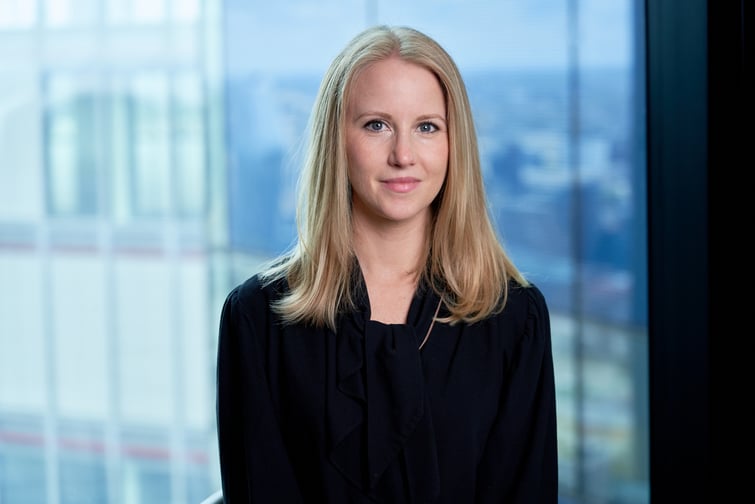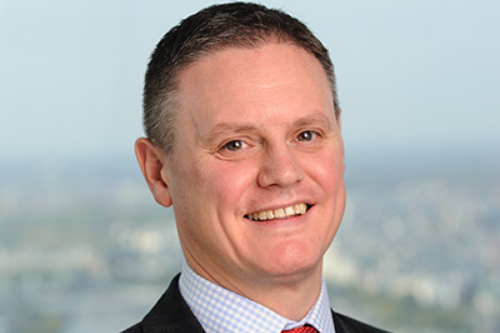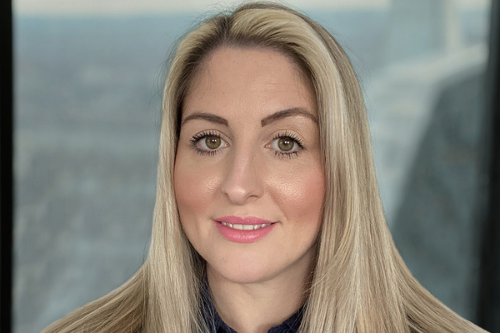

The risks that face directors and officers are ever-evolving and so it stands to reason that the D&O insurance space must be similarly fast-paced in order to manage and mitigate these challenges. When touching on some of the concerns that their broker partners and clients are now communicating, Brit’s D&O underwriting team revealed that it is this pace that makes operating in this market so special.
Kirstin Simon (pictured above), the newest member of the team who joined Brit’s financial lines business as an underwriter in April 2021, highlighted how the challenges the market faces are never stable, and her role offers her the opportunity to work across a vast array of industry sectors.
“You have exposure to some large household names, to see their internal workings and the individuals running those organisations,” agreed Jonathan Ball (pictured immediately below), D&O underwriter, Brit. “So, you get a better understanding of how those companies are run with regards to different stock market listings, and the different reporting requirements so there’s always something to think about and you are thinking about what is going to be the next challenge. It really keeps you on your toes.”
There’s certainly never a dull moment in D&O noted Amy Nunney-Bates (pictured bottom), D&O underwriter, Brit as she summarised some of the key trends that the team is seeing across the marketplace, with ESG and cyber risk two key areas of exposure. It is clear that ESG is going to be an issue at the forefront going forward, both on a direct basis and with regards to shareholder derivative actions.
“There’s been a definite shift over the last few years, moving away from traditional financial mismanagement type litigation to more event-driven type litigation,” she said. “That’s MeToo claims, opioid issues, board diversity issues, climate change, etc. So, boards need to ensure they’ve got comprehensive oversight in place and are making adequate disclosures around these in order to protect themselves from unwanted attention from the plaintiff law firms.”

Given the increasing need for accountability when it comes to ESG, Ball highlighted that the actions taken by senior leaders need to be evaluated on an ongoing basis. If a company has addressed ESG or climate change targets then they need to ensure that they continue hitting those targets every year and, if they aren’t, to evaluate why that is the case. The key objective of the Paris Agreement is to be carbon-neutral by 2050, he said, but while that might seem a long way off, there is still a lot of work to be done.
Simon corroborated this, noting that a lot of companies have set 2030 as a target which gives them only nine years to achieve that ambition, which only becomes more pressing as time ticks on. Companies, and their stakeholders, need to continuously monitor whether they’re meeting the disclosures and targets that they’ve set. Nunney-Bates highlighted that this is also set against a backdrop of increasing climate change activism against corporate bodies and that it will be interesting to see how this developing trend in Europe plays out.

“[Also], cyber security is critical exposure for D’s & O’s,” she said. “And you’ve completely taken your eye off the ball if you’re not addressing it in one or another and making sure you’ve got the appropriate benchmarking standards that companies need to adhere to. The sophistication of ransomware attacks, for example, and cyber exposure is increasing. As a board, if you’re not demonstrating to your key stakeholders that you’re at least trying to protect the company then you’re missing a huge point because it is a huge exposure.”
COVID-19 has only accelerated that, Simon said, given the influx of people working remotely. If firms don’t have the cyber security framework in place to protect their staff and their clients then this will fundamentally result in financial losses. This is one consideration that drives the line of questioning Brit’s team undertake, to ensure that clients regard this as a strategic priority and are effectively communicating the risks in their public disclosures.
“It’s these sorts of issues that directors and officers are becoming far more accountable for,” she said. “There is an ever-increasing amount of public scrutiny on the conduct of the board in managing the company and therefore this accountability is becoming more and more important. In this environment, clients are doubling down into the essence of D&O cover therefore which is, first and foremost, the protection of the directors and officers.”
The purchasing behaviours of insureds are also changing, Nunney-Bates said, because of changes in the insurance market in the last year with carriers curtailing their capacity, restricting cover, removing reinstatements and stripping out the B&C side elements of cover. Some insureds are therefore constrained by their insurance purchasing budgets while some decisions are being precipitated by the fact that some insureds are actually not able to purchase broader levels of cover in their industry sectors. Against this backdrop, Simon noted that it was an exciting and well-timed moment to expand the Brit team, addressing gaps in the market with Brit’s core D&O proposition.
Looking to the future, Simon said that while the wider market is facing a period of financial turmoil, it isn’t the first that it has faced and what is essential is that insurers, brokers and end clients work together to find the right solutions to sustainably navigate through the current period of uncertainty.
“Both the team and Brit as a company have ridden out many waves over its time,” Simon said, “and during this period we have seen the evolution of the claims landscape. And it’s having those long-standing relationships that we can offer that sets us apart. There is a lot of change in the market so the consistency that we offer makes us very unique. From a personal experience, when it was announced that I was joining Brit, the feedback from brokers was extremely positive and that’s testament to the team and the work that Brit does.”
